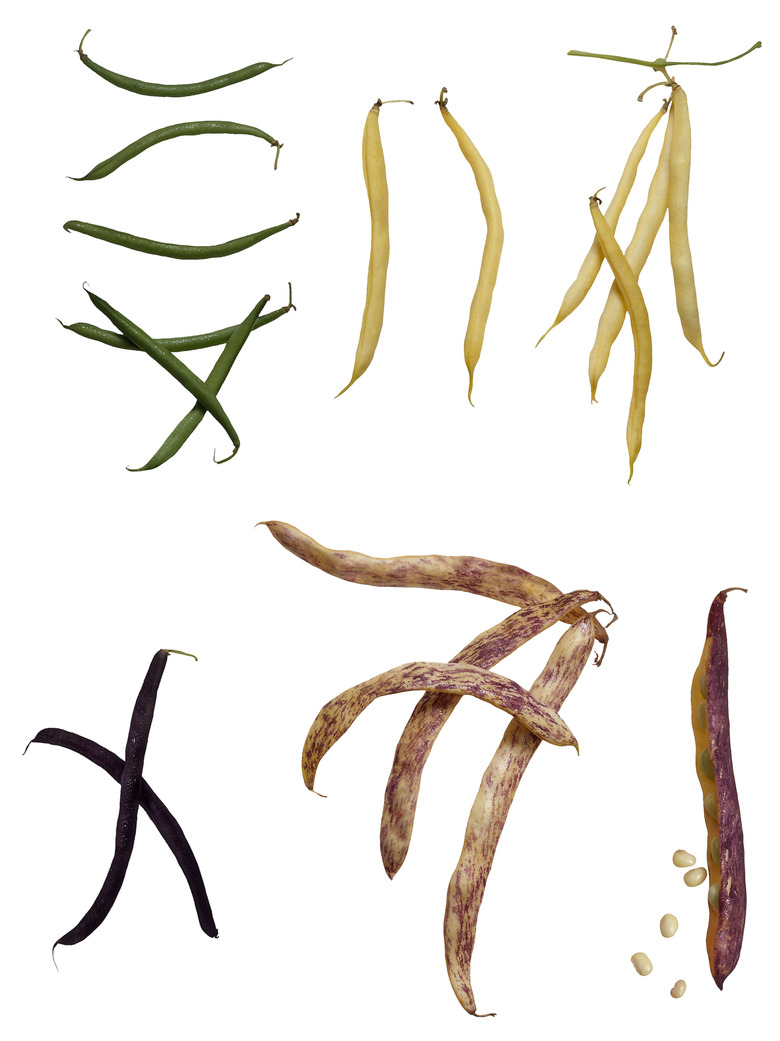What Tree Has A Long Black Bean Pod?
Trees often bear decorative fruits in the form of long, dangling dark-colored pods. These fruits can sometimes be a nuisance in the landscape, littering flower beds and grass with discarded pods, while others pod are persistent and stay on the tree for a long period of time. Pods often serve as food for wild birds and animals. Some are even useful to humans as food or other purposes. Nearly all trees that form seedpods are members of the Fabaceae family.
Step 1
Since seeds pods can be as small as an inch or less, certain tree pods can be considered large by comparison. The eastern redbud (Carcies canadensis), for example, hardy in U.S. Department of Agriculture plant hardiness zones 4 through 8, produces brownish-black pods about 3 to 4 inches long. These pods follow bright purple, pea-like flowers that brighten the late spring landscape. Mesquite (Posopis sericantha), hardy in USDA zones 8 though 11, bears brownish-black, 4-inch seedpods and is considered invasive in some areas.
6 to 12 Inches Long
Step 1
Pods that average 6 to 12 inches long may sometimes be smaller or larger, depending on growing conditions. The carob tree (Ceratonia siliqua), hardy in USDA zones 9 through 11, bears light brown to dark brownish-black pods anywhere from 4 to 12 inches long. The pink orchid tree (Bauhinia monandra), hardy in USDA zones 9b through 11, bears 6- to 12-inch pods that follow pink, orchid-like flowers.
Step 2
Step 3
- Since seeds pods can be as small as an inch or less, certain tree pods can be considered large by comparison.
- The carob tree (Ceratonia siliqua), hardy in USDA zones 9 through 11, bears light brown to dark brownish-black pods anywhere from 4 to 12 inches long.
12 to 20 Inches Long
Step 1
The northern catalpa, or cigar tree (Catalpa speciosa), hardy in USDA zones 4 through 8, is a large tree with white, orchid-like clusters of flowers. The 8- to 20-inch pods are brownish- to reddish-black when fully mature, and pods remain on the tree throughout the winter. It is an aggressive grower and may become invasive in certain areas. Catalpas, while beautiful, dump an enormous amount of litter. First, the plentiful flowers fall off, then the large leaves, and finally, the seedpods.
Step 2
More than 20 Inches Long
Step 1
The golden shower tree (Cassia fistula), hardy in USDA zones 10b through 11, bears enormous seedpods that can reach 24 inches or more in length. The brownish-black to purplish-black pods follow abundant bright yellow flowers and persist on the tree throughout the winter. In spring, the pods fall to the ground and can be quite difficult to clean up. The seeds inside the pod are poisonous, so don't plant this tree where children or animals may be attracted to the pods.
Step 2
- The northern catalpa, or cigar tree (Catalpa speciosa), hardy in USDA zones 4 through 8, is a large tree with white, orchid-like clusters of flowers.
- The 8- to 20-inch pods are brownish- to reddish-black when fully mature, and pods remain on the tree throughout the winter.
References
- U.S. Department of Agriculture Natural Resources Conservation Service: Catalpa Speciosa
- Missouri Botanical Gardens: Cercis Canadensis
- Federal Noxious Weed Disseminules of the U.S.: Prosopis Sericantha
- U.S. Department of Agriculture: Federal Noxious Weed List
- Global Species: Prosopis Sericantha (Mesquite; Retama; Algarobilla; Barba De Tigre; Temoj; Huaschilla; Espina De Dios; Albardon)
- Urban Forest Ecosystems Institute: Carob Tree
- Some Magnetic Island Plants: Bauhinia Monandra
- Iowa State University: Catalpa
- Forest Service Department of Agriculture: Cassia Fistula
